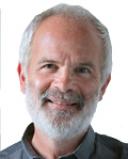Education
From Second Language Learning to Bilingualism in Schools
How second language learning has evolved over time
Posted November 21, 2013
Post written by François Grosjean.
We are many who feel that education should help children and adolescents acquire a second or third language while retaining their first language. Education should also encourage the active use of those languages, if at all possible.
Currently, many educational systems throughout the world follow one of UNESCO's objective in its 2002 Universal Declaration on Cultural Diversity which encourages, among things, "the learning of several languages from the earliest age". But there are many different ways of doing so, as we will see below.
First, there is the traditional way of teaching a second or foreign language that many of us have experienced as children in whatever country we have grown up in. The language is a subject that is taught in a rather formal way at specific times during the week. It rarely becomes a means of communication and it is not a medium used to teach other subjects. Despite this, second-language (or foreign-language) teachers (see here for a post dedicated to them) usually make every effort to transform language learning into an enjoyable and lively activity. For example, they now use Web-based and other audiovisual methods including singing and music, as well as diverse communicative strategies, to teach the language in question.
At the end of their schooling, students come away with formal knowledge of the second language and its accompanying culture(s) and, quite often, its literature. But if the classes were rather large, and they only met a few times a week, students may not have made all the progress wanted and will not have used the language orally that much. And with time, unless they visit a country or region where the language is used, or take additional courses, their knowledge of the language may well wither away.
In order to remedy this, educators and psychologists from McGill University (Wallace Lambert, Richard Tucker and others), set up "immersion programs" in the second half of the last century, first in the small town of St. Lambert in Quebec, Canada, and then elsewhere in the country and abroad. What is interesting with this approach is that students acquire a language by learning subject matters in that language–it is the medium of instruction–instead of acquiring it through formal instruction. Thus, in the St. Lambert project, English-speaking children were taught in French, by French-speaking teachers, starting in kindergarten.
From first grade on, the teachers never spoke English to the students or with one another, so as to create, as far as possible, a totally French-speaking environment. The children were taught to read and write in French starting in grade one. In grade two, they started having English-language classes for about an hour a day, but the rest of the program was in French. Little by little, more English was brought in, so that by grade six, more than half the teaching was in English.
The approach proved to be highly successful as the children were in no way behind control groups who had been taught in English only. Their intelligence level was equivalent to that of the controls, and their knowledge of French was far better than that of other English-speaking children their age. The one thing missing was the active use of French outside the school which was left to the families to work on.
The immersion approach is now used widely in many countries of the world as well as in language-revival programs. There are numerous versions of it such as late-immersion or language-switch programs which start the instruction in the second language in later grades. There are also partial-immersion programs which use the second language for half of the day and for certain subjects only. Whatever the version, though, children become much more fluent in the second language than do children in more traditional programs. In addition, children in immersion programs benefit from many of the advantages of bilingualism (see here and here).
Another type of program–the dual-language or two-way immersion program–promotes bilingualism and biliteracy, as well as a very real understanding of the people and cultures involved. Here two languages are used throughout schooling and, what is new, the students come from both language backgrounds. An example of such a program is the Amigos School in Cambridge, Massachusetts. It is open to students of families in which Spanish is the dominant language as well as to students for whom English is the main language. Every student group, or class, has a balance of native-English and native-Spanish speakers. Groups rotate between their English classroom and their Spanish classroom.
What is special about these programs (there are still very few available nation-wide) is that students become literate in two languages, discover the culture of the other language group, interact with speakers of that language and culture, and help one another out. Thus, students who are dominant in one language work with, and help, students dominant in the other language. This allows them to have a better understanding of what it means to be able to help someone who does not understand what is being said and to be helped by someone when you are in the same situation.
Both immersion and dual-language programs are extremely promising approaches as they aim for bilingualism, and in the case of dual-language programs, for biculturalism also. They clearly benefit all those concerned, whatever the culture they come from.
For a post on the cognitive advantages of immersion education, see here.
Photo of a teacher looking at a class book from Shutterstock.
References
- Grosjean, François (2010). Education and bilingualism. Chapter 19 of Grosjean, François. Bilingual: Life and Reality. Cambridge, MA: Harvard University Press.
- Baker, Colin (2006). Foundations of Bilingual Education and Bilingualism. Clevedon, England: Multilingual Matters.
- The Center for Applied Linguistics (CAL) in Washington, D.C. specializes in language education and teaching foreign languages to children. Here are just two examples of documents they offer on their website:
What parents want to know about foreign language immersion programs
Two-way bilingual education programs in practice: A national and local perspective
"Life as a bilingual" posts by content area.
François Grosjean's website.




